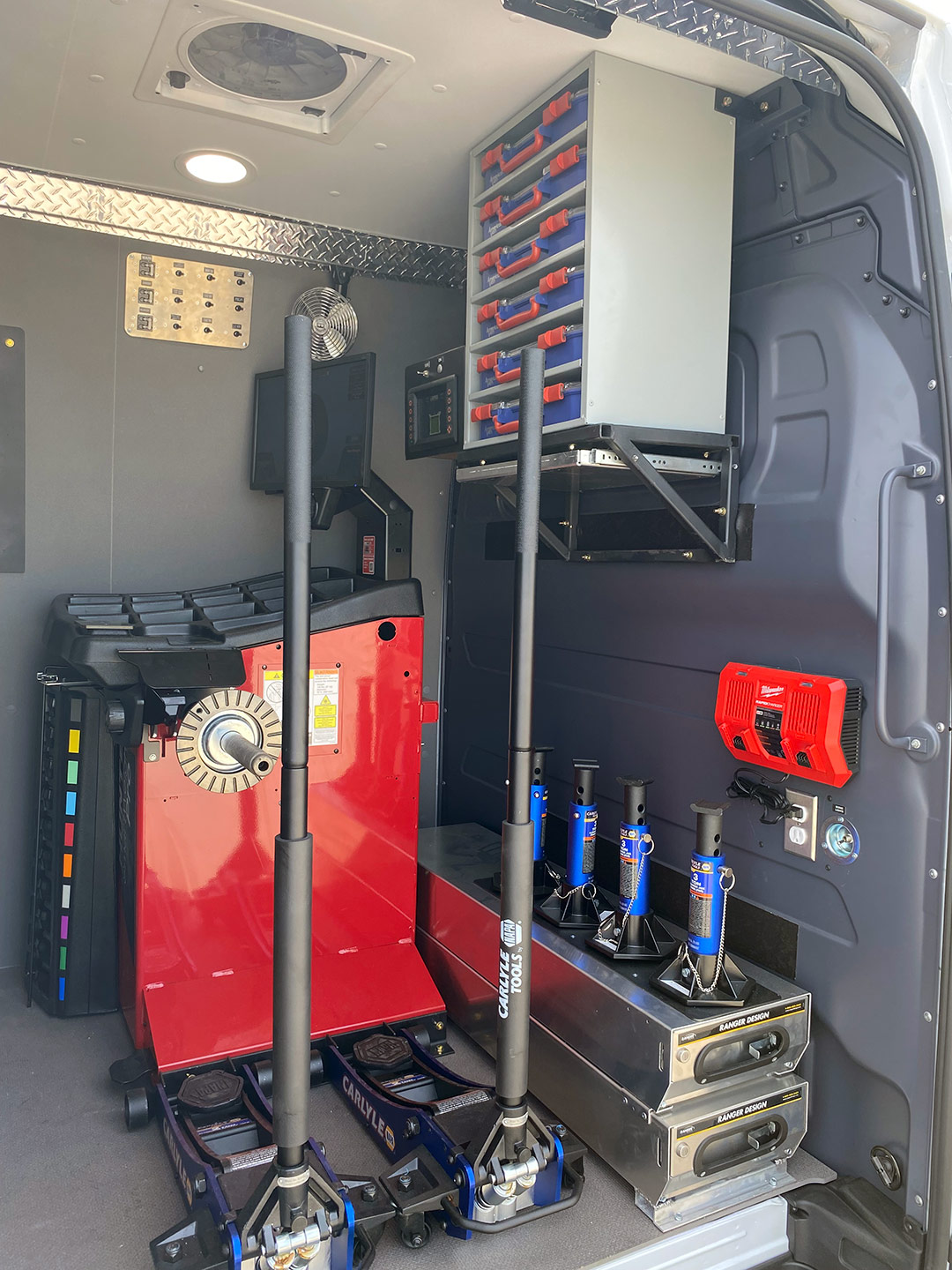Premium Mobile Tire Replacement Las Vegas - Quality Ensured
Wiki Article
Tire Service: Proven Techniques for Optimal Tire Maintenance and Care
Preserving optimal tire problem is paramount for both safety and performance of any vehicle. From ensuring correct tire stress to normal turning and alignment, there are tested approaches that can dramatically expand the lifespan of your tires and improve overall driving experience. As we discover the ins and outs of tire care and maintenance, we will certainly discover vital guidelines that every lorry proprietor should abide by for the ideal feasible outcomes. Let's look into the globe of tire service and find the secrets to maintaining your tires in first-class form for the long run.Relevance of Tire Stress
Appropriate tire stress advertises better gas efficiency, as under-inflated tires can lead to boosted rolling resistance, triggering the engine to function more difficult and eat more fuel. Proper tire stress ensures also tread wear, improving tire long life and saving cash in the lengthy run by delaying the demand for premature replacements. Frequently inspecting and readjusting tire pressure, particularly in the past long trips, is a simple yet efficient method to enhance lorry performance, expand tire life expectancy, and prioritize safety on the roadway.Tire Rotation Guidelines
When taking into consideration tire turning guidelines, it is important to comprehend the value of this maintenance task in making best use of tire life-span and preserving ideal automobile efficiency. Tire turning includes transforming the placement of each tire on a vehicle to make sure even walk wear. Front tires tend to put on extra promptly than back tires due to guiding pressures, making normal rotation essential for balanced wear patterns.
Benefits of Wheel Alignment
Making sure proper wheel placement after tire turning is crucial for maintaining balanced wear patterns and optimizing lorry efficiency. Furthermore, right wheel positioning helps to expand the life expectancy of your tires. Misaligned wheels can trigger unequal tire wear, leading to premature tire substitute and raised maintenance costs.

Tire Footstep Depth Check
Doing a regular examination of tire step deepness is essential for maintaining risk-free driving problems and lengthening the life-span see post of your tires. The walk on your tires plays a vital duty in offering traction, particularly in unsafe or damp problems. To examine your tire tread deepness, you can utilize a step depth scale or the dime test. The suggested step depth goes to least 2/32 of an inch. If the tread deepness is below this limit, it is time to replace your tires to ensure optimal efficiency and safety when driving. Irregular tread wear can suggest issues with tire alignment, suspension, or wikipedia reference stress, highlighting the value of routine walk deepness checks. Ignoring to monitor and preserve correct step depth can lead to decreased grip, longer stopping distances, and an increased danger of hydroplaning. By incorporating tire walk deepness explore your routine upkeep routine, you can drive with confidence recognizing that your tires remain in leading condition.
Seasonal Tire Inspection
A detailed analysis of tire condition tailored to certain weather is important for keeping optimal performance and security throughout the year. Seasonal tire assessment is an essential facet of tire maintenance that ensures tires are prepared to encounter the challenges posed by various weather. To prepare for winter season, it is important to examine the tire stress routinely as cold temperature levels can trigger tire stress to drop. Evaluating tire tread deepness is also vital to make certain appropriate grip on snow and ice-covered roadways. Additionally, looking for indicators of deterioration, such as bulges or fractures, can help prevent potential tire failings. As the seasons modification, it is very important to analyze tire problem and make any kind of needed modifications to ensure safe driving. By performing routine seasonal tire assessments, drivers can prolong tire lifespan, boost fuel performance, and most importantly, make sure a protected driving experience in varying climate condition - Flat Tire Repair Las Vegas.Final Thought
To conclude, keeping proper tire stress, turning tires regularly, aligning wheels properly, keeping an eye on tread deepness, and performing seasonal evaluations are important methods for optimum tire treatment. By adhering to these proven techniques, motorists can guarantee their tires last much longer, do far better, and add to overall automobile safety and security. It is essential to prioritize tire upkeep to avoid crashes, enhance gas efficiency, and lengthen the life-span of tires.Sufficient tire stress promotes far better fuel performance, as under-inflated tires can dig this lead to boosted rolling resistance, triggering the engine to work harder and consume more gas.When considering tire rotation standards, it is important to recognize the value of this upkeep task in optimizing tire life-span and maintaining optimal car performance. Seasonal tire inspection is an essential facet of tire maintenance that guarantees tires are ready to face the challenges positioned by different weather problems. By performing routine seasonal tire inspections, chauffeurs can prolong tire life expectancy, boost gas performance, and most importantly, guarantee a safe driving experience in varying climate problems.
In verdict, keeping correct tire stress, revolving tires consistently, straightening wheels appropriately, keeping track of step deepness, and performing seasonal inspections are vital practices for optimal tire care.
Report this wiki page